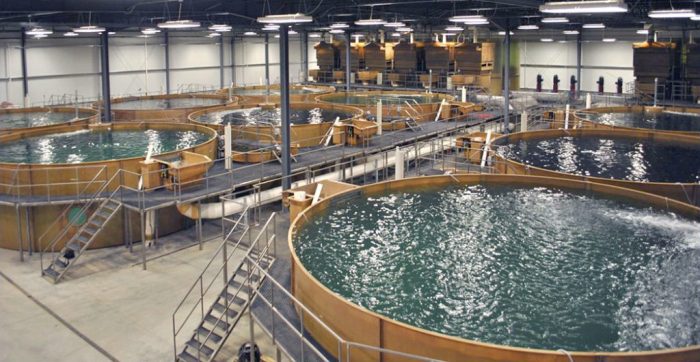Aquaculture is becoming more common along India’s coastlines, driven by increasing demand for seafood and population growth. This trend is transforming coastal communities and the nation’s economy, presenting both opportunities and challenges.
Various types of aquaculture practices, including finfish, shellfish, and seaweed farming, are employed in India. Each method offers unique benefits and faces specific challenges, shaping the industry’s development.
Aquaculture’s Growing Presence on India’s Coastlines
Aquaculture, the farming of aquatic organisms, is experiencing a surge in prevalence along India’s coastal areas. This growth is driven by increasing population and the resultant demand for seafood. The Indian government has actively promoted aquaculture as a means to meet this demand and improve economic prospects for coastal communities.
Data from the National Fisheries Development Board (NFDB) reveals a steady increase in aquaculture production in India. In 2020-21, the country produced 14.2 million tonnes of farmed aquatic products, a 12% increase from the previous year. This growth is expected to continue in the coming years, with the government targeting an annual production of 20 million tonnes by 2025.
Types of Aquaculture Practices in India

Finfish Farming, Aquaculture is becoming more common along india’s coastlines
Finfish farming, the cultivation of fish species, is the most prevalent form of aquaculture in India. Common species farmed include carp, tilapia, and catfish. Finfish farming is typically carried out in freshwater ponds or cages in coastal waters.
Shellfish Farming
Shellfish farming involves the cultivation of mollusks, such as oysters, mussels, and clams. These organisms are typically grown in coastal waters or estuaries. Shellfish farming is gaining popularity due to the increasing demand for seafood and the potential for export.
Seaweed Farming
Seaweed farming, the cultivation of marine algae, is an emerging industry in India. Seaweed is used for food, animal feed, and the production of pharmaceuticals. Seaweed farming is typically carried out in coastal areas with suitable water quality and sunlight.
Economic Impact of Aquaculture in India

Aquaculture has a significant economic impact on India’s coastal communities. It provides employment opportunities, increases income levels, and contributes to export earnings.
- Job Creation:Aquaculture employs over 1.5 million people in India, including farmers, processors, and marketers.
- Increased Income:Aquaculture provides higher income opportunities for coastal communities compared to traditional fishing. Farmers can earn up to 50% more from aquaculture than from fishing.
- Export Potential:India is a major exporter of farmed seafood, particularly shrimp and tilapia. In 2020-21, India exported 1.2 million tonnes of farmed seafood, earning over USD 6 billion.
Environmental Considerations for Aquaculture: Aquaculture Is Becoming More Common Along India’s Coastlines

Aquaculture has the potential to impact the environment, particularly through water pollution and habitat loss. However, measures are being taken to mitigate these impacts and promote sustainable aquaculture practices.
- Water Pollution:Aquaculture can release nutrients and organic matter into the water, leading to pollution. To address this, farmers are adopting best management practices, such as using biofilters and reducing feed waste.
- Habitat Loss:Aquaculture can result in the conversion of natural habitats, such as mangroves, into farms. To mitigate this, farmers are encouraged to use existing water bodies and adopt sustainable farming methods that minimize habitat disturbance.
Social Implications of Aquaculture

Aquaculture has social implications, particularly on traditional fishing communities. However, it can also provide food security and improve livelihoods.
- Impact on Traditional Fishing Communities:Aquaculture can compete with traditional fishing for resources, such as space and feed. This can lead to conflicts between fishers and aquaculture farmers.
- Food Security:Aquaculture can provide a reliable source of food for coastal communities and contribute to food security in India.
- Improved Livelihoods:Aquaculture can provide income and employment opportunities for people in coastal areas, improving their livelihoods and reducing poverty.
Quick FAQs
What factors are driving the growth of aquaculture in India?
Increasing population, rising demand for seafood, and government support are key factors.
What are the main types of aquaculture practiced in India?
Finfish farming (e.g., shrimp, tilapia), shellfish farming (e.g., oysters, mussels), and seaweed farming.
What are the potential environmental impacts of aquaculture?
Water pollution, habitat loss, and disease transmission are concerns that need to be addressed.
How can aquaculture contribute to sustainable economic development?
By creating jobs, increasing incomes, and providing a reliable source of food.